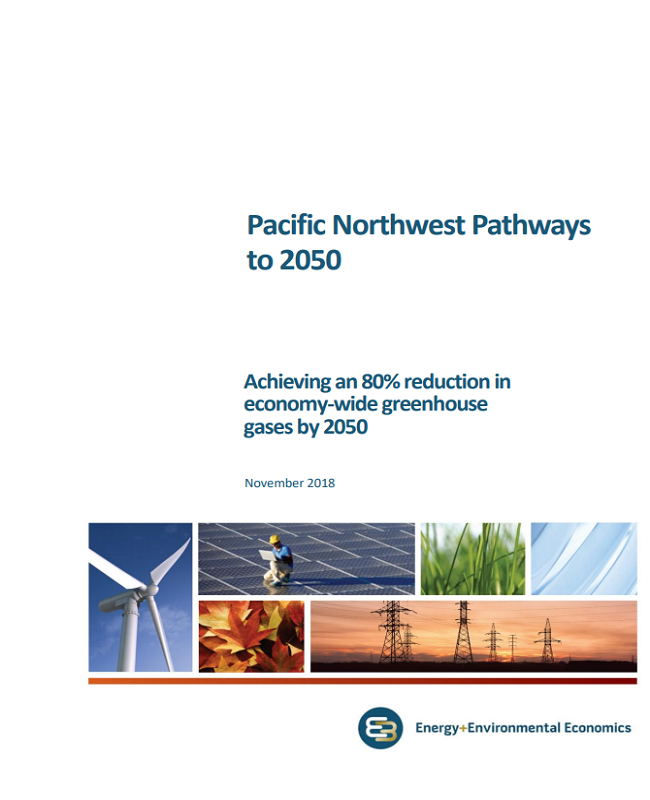To help limit the worst impacts of climate change, Oregon and Washington have both committed to achieving significant reductions in greenhouse gas (GHG) emissions by 2050. Policymakers and the public are also contemplating new policies and programs to achieve steep regional GHG reductions. This study evaluates the technology implications, and potential costs and savings, of different strategies to achieve long-term, economy-wide GHG reductions in Oregon and Washington. This study considers GHG emissions reductions of 80 percent below 1990 levels by 2050, a level of reduction often called “deep decarbonization.”
This study builds on an existing body of research, in which prior, similar studies focused on deep decarbonization at the sub-state level. However, none of the prior studies, to our knowledge, has investigated the costs and implications of meeting winter peak energy needs during the region’s coldest periods.
This study focuses on the role of buildings in meeting broad, economy-wide carbon reductions, and pays special attention to the performance of building space heating technologies under cold temperature conditions, and the costs of reliably serving those loads.
More About this Resource
Publisher: Energy and Environmental Economics
Date: November 1, 2018
Type: Case Studies
Tags: Building Electrification, Decarbonization, Energy Efficiency, Heat Pump Water Heating, Natural Gas
Countries: United States
States: Oregon, Washington

